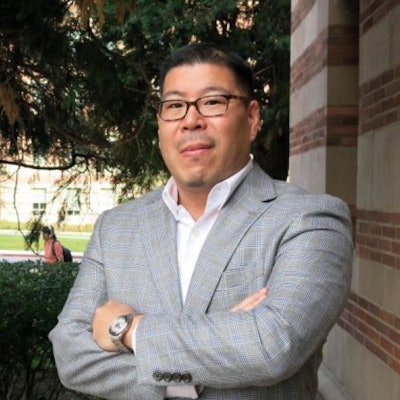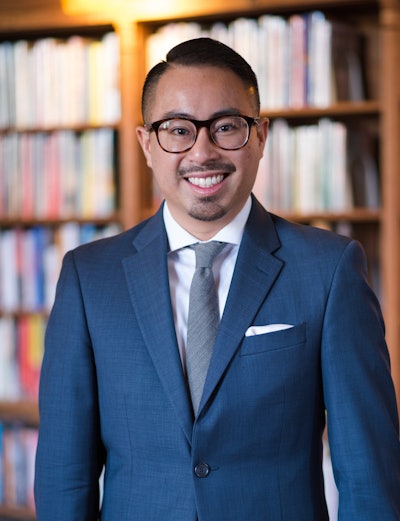Since the passing of the Higher Education Act (HEA) of 1965, 11 Minority Serving Institution (MSI) designations have been created, the most recent being Asian American Native American Pacific Islander Serving Institutions (AANAPISIs). These MSIs reflect the changing demographic landscape of America by offering institutions a chance to compete for Title III, V, and VII grants that can serve their unique populations.
 Dr. Robert Teranishi, professor of social science and comparative education and the Morgan and Helen Chu Endowed Chair in Asian American studies at the University of California, Los Angeles.
Dr. Robert Teranishi, professor of social science and comparative education and the Morgan and Helen Chu Endowed Chair in Asian American studies at the University of California, Los Angeles.
According to the 2022 federal MSI eligibility data, 192 institutions in the U.S. are eligible to apply for AANAPISI funding. But of those 192, only 32 currently receive an AANAPISI grant.
“There is a growing number of institutions that are eligible to be both AANAPISIs and Hispanic Serving Institutions (HSIs). Our analysis, for example, indicates that nearly half of eligible AANAPISIs are also eligible as HSIs,” said Dr. Robert Teranishi, a professor of social science and comparative education and the Morgan and Helen Chu Endowed Chair in Asian American studies at the University of California, Los Angeles.
“Title III, Part A does not allow a campus to receive another Part A grant simultaneously,” said Teranishi, which can create a conflict for HSI and AANAPISI schools.
These restrictions were designed to increase the number of institutions able to receive grants, but Teranishi said it has resulted in “instances where an institution has turned down one grant to accept another.”
The Department of Education has tried to prevent this conundrum. Two different acts, in 2007 and 2008, created two different application cycles for AANAPISI grants. In theory, those institutions who cannot accept Part A (because they accepted an HSI grant) can apply for AANAPISI Part F in the next cycle.
Dr. Mike Hoa Nguyen, an assistant professor at the Morgridge College of Education at the University of Denver, called this solution “a very imperfect approach.”
 Dr. Mike Hoa Nguyen, assistant professor at the Morgridge College of Education at the University of Denver.
Dr. Mike Hoa Nguyen, assistant professor at the Morgridge College of Education at the University of Denver.
If an institution doesn’t have the resources needed to create competitive applications for both cycles, they might have to make a choice between HSI and AANAPISI Part A grants.
“Sometimes you see schools forced to pick between the two,” said Nguyen. “I can understand, if you’re going to get an AANAPISI grant that’s about $.5 million, versus an HSI, which could be $5 -10 million—that’s a huge swing in funding. So that’s a tough decision for any college leader to make.”
The difference in grant amounts reflect the total pool of funds that each MSI designation has to pull from. In 2019, HSI grant appropriation totaled $124 million, and AANAPISI funding totaled $8 million.
“All of these MSIs came into existence under different Congresses, proposed by different people,” said Dr. Marybeth Gasman, director of the Center for MSIs at Rutgers University. “Different congressmen have more or less pull, different groups have more or less pull, depending on what’s going on in the [executive] office.”
These differences, said Gasman, and a staggered timeline of creation, influence the legislators who control the funding and refunding of the 11 different MSIs.
But another factor could be contributing to low AANPISI funding overall, according to AANAPISI scholars like Dr. Timothy Fong, professor of ethnic studies at California State University, Sacramento—the false belief in the “model minority,” that AAPI students all come from wealthy families and need little to no academic support.
Fong is the director and principal investigator of the “Full Circle Project,” a support program for Sacramento State Asian Pacific Islander Desi American students, created with an AANAPISI Part F grant.
Without a strong advocate, Fong said some institutions won’t look beyond the "model minority" myth and see just how much their AAPI students could benefit from AANAPISI grants.
“It’s huge funding discrepancies between MSIs, and AANAPISI is basically the lowest funded, our per capita amount is fractional compared to others. That’s the big fight,” said Fong. “The way we argue, it’s like choosing between your two kids. It’s frustrating because we’re limited. We’d be able to do more with other opportunities.”
Nguyen said that no AANAPISI scholar wants to take money or resources away from another MSI designation.
“It’s not even about increasing the pie. That analogy still means they’re fighting each other,” said Nguyen. “It’s about funding institutions based on characteristics and intentions, how they serve their students.”
Dr. Andrés Castro Samayoa, an assistant professor of educational leadership and higher education at Boston College, said the dual designation dilemma could be solved in a reauthorization of the HEA, last done in 2008 under then-president Barack Obama.
“In terms of legislation that needs to follow, it’s about getting into the nitty-gritty of funding systems, that’s what hasn’t been addressed. How do we expand dual eligibility criteria and do away with the red tape that’s been artificially set up to make things more complicated?” asked Samayoa. “What we need to do is really listen to the experience, engage with other colleagues that are saying there is a systemic issue in terms of how the Department of Education is supporting MSIs.”
Liann Herder can be reached at [email protected].






















